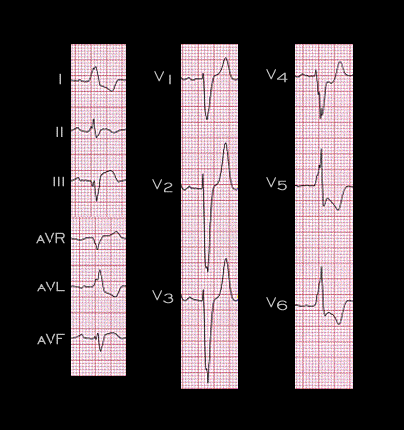
This ECG is from the same patient recorded during an episode of his characteristic chest pain. There is now 2-3mm ST segment depression in leads I, aVL, V4 and V6 and 4mm ST depression in V5. In addition, there is ST segment elevation in leads III and aVF. These changes, combined with the patient’s symptoms and the prior electrocardiogram now permit the diagnosis of acute ischemia.
